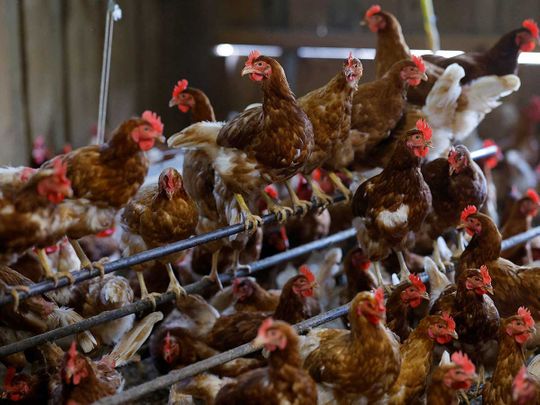
The wild bird feeders were the first to go. Over the years, they had done their work, attracting songbirds in warmer months and providing a hotspot for my eight chickens in the winter. But even before the arrival of avian flu in my home state of Oregon, US last week, I took the feeders down — anything to help save my flock.
Early this year, a highly contagious strain of avian flu travelled west from the east coast, leaving devastation in its wake. Some 37 million chickens and turkeys have been killed either from the disease itself or because of efforts to stop its spread. Dozens of bald eagles and thousands of wild birds have died, but poultry — chickens in particular — have borne the brunt of this virus.
For months, anyone with backyard chickens in the US worried about whether they have to put their chickens into “flock-down” until the threat of the avian flu passed. In Britain, chickens and other poultry were required by government order to remain inside in November. Restrictions were only lifted in early May.
This virus is hard to stop because it’s mostly spreading through wild birds. But we don’t really know how widespread avian flu is in wild populations. It’s likely that waterfowl can be carriers of the virus, spreading it from one pond to another during spring migration.
Except for two older hens, rescued from an egg farm when they were considered too old to be profitable, I’ve raised all my chickens since they were a day old. I watched them grow from downy chicks into fully mature hens. They each have names and quirks.
My bantam, Emmylou, likes to lay her eggs in the yard where I can’t find them. Peggy, a large grey hen with a jaunty beard, is the head hen of the flock and will step between fights and break them up with just a stare. Olivia, a Black Copper Marans who lays chocolate-coloured speckled eggs, is convinced that she’s constantly in a state of starvation and will push the others out of the way when I’m giving out treats.
Though they live in a coop and provide plenty of eggs, I don’t think of them differently than any cockatiel or parakeet I’ve had. I hire a pet sitter when I go out of town, and they go to the vet when they get sick. That’s why when the first case of avian flu was confirmed, I decided that the chickens would be restricted to quarters until the threat of disease had passed.
Usually, the chickens spend part of the day in their coop with an attached, enclosed run where they have room to perch and scratch and dust bathe. For the rest of the day, they have the run of my half-acre suburban yard. They nap in the sun, peck at worms and dandelion greens, and occasionally stretch their wings with a flying leap into the air.
Not anymore. Now they’re stuck in their coop and run, for weeks if not months, while I try to think up ways to keep them from getting bored. I’m even looking for ways to sanitise my “chicken shoes” before I walk into the coop to avoid tracking in the virus.
Best practices for the backyard hen-keeper are harder to pin down. While chicken forums on social media are full of people seeking information about how to protect their flocks, the advice is mostly unofficial and common sense. Take down your bird feeders. Keep your birds inside an enclosed run. Only go into the chicken area with clean clothing and shoes to avoid spreading the disease.
So, once again, we are on our own. The hens are not happy about this, but at least I know I’m trying to save their lives.
Washington Post
Tove Danovich is a journalist. Her book about backyard chickens, “Under the Henfluence,” is expected next year.







